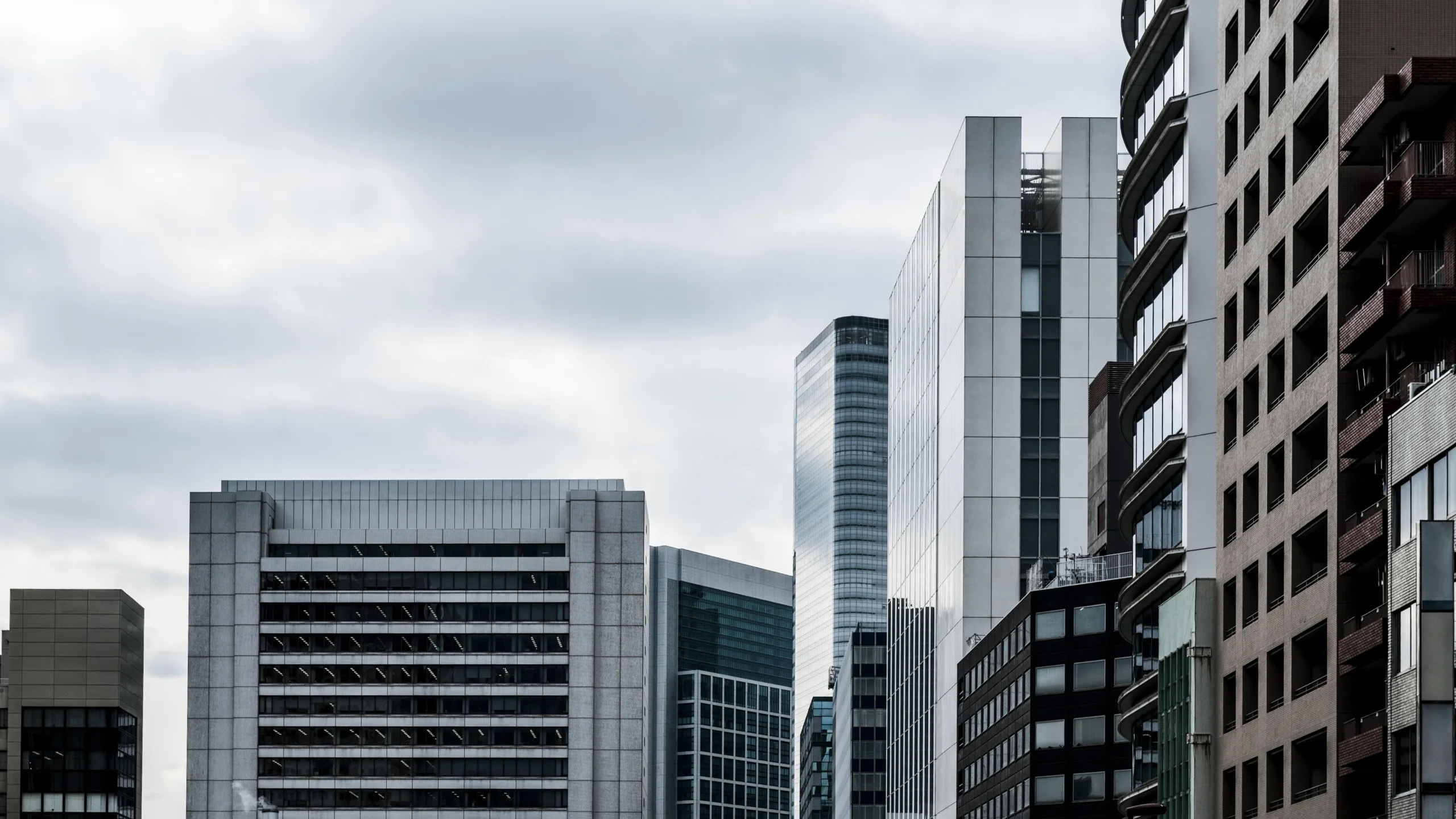John Burns & CRE Daily’s Fear and Greed Index Reveals Investor Optimism with Caution
Plus: Chicago’s hospitality sector saw a huge occupancy boost in Q3, and is gearing up for an even better holiday season.
Together with
Good morning. Exciting news – the CRE Daily merch store is now live, featuring a collection of winter sweaters ❄️ perfect for the holiday season. Secure yours before they sell out!
In today’s email:
-
📈 CRE Fear and Greed Index data.
-
📐 2024: Pivoting in a mixed economy.
-
🏢 NYC: Rising issues in rent-stabilized apartments.
-
🎉 Chicago: Hotel occupancy reaches 75%.
Today’s issue is sponsored by BetterPitch. Focus on your deal, not your deck.
👋 First time reading? Sign up.
🎁 Want free merch? Share this.
Market Snapshot
|
|
||||
|
|
*Data as of 11/16/2023 market close.
FEAR AND GREED
CRE Investors Show Cautious Optimism in 2024, Except for Office Sector
We are excited to share the data from the CRE Daily x John Burns Fear and Greed Survey. This survey captures sentiment among 714 CRE investors and professionals in Q3 across commercial real estate.

Investor trends: Commercial real estate investors are still more “Greedy” than “Fearful”, though many investors have hit pause. 28% of commercial investors are increasing their investment exposure now as compared to 23% decreasing their investment exposure (net 5% of investors are still “greedy”).
-
Nearly half (49%) of investors told us that holding and leaving their CRE exposure unchanged is the right course of action right now, particularly given financing challenges and market volatility.
Office sector pessimism: Office investors are overwhelmingly pessimistic in today’s environment, with a net 40% of office investors decreasing their investment exposure. Remote/hybrid work arrangements, slower hiring (or outright layoffs) in rate-sensitive sectors, and higher interest rates have all impacted office occupancy and valuations over the last year.

c
Decline in asset values: The survey indicates a YoY decline in asset values across all sectors. This insight provides an important real-time indicator for changes in asset values, as it captures investor perceptions rather than actual transaction data. Transaction volumes have been limited due to discrepancies in buyer and seller expectations, obscuring the true extent of the fall in asset values.
“Low transaction volume has obscured the extent to which values have fallen, but owners cannot avoid the realities of the market in perpetuity. Over the next 12 to 24 months, values will fall more abruptly than they have since the Fed began tightening monetary policy.” – Texas Investor / CRE Daily Subscriber
➥ THE TAKEAWAY
Greedy? Be careful: Current market conditions, including higher long-term interest rates, suggest a potential downside risk in the CRE market. Our survey findings imply that distressed opportunities may become more evident in the next 2+ years, particularly in the office sector and oversupplied multifamily markets, as the CRE market adjusts to increased capital costs.
Thank you to all the subscribers who participated in our survey. We will continue to monitor these trends and provide updates in our next quarterly edition of the Fear and Greed Index.
Methodology: Results constructed from 714 unique responses collected over a 2-week period in October 2023. Participants were asked to rate their sentiment with respect to investing in each sector of commercial real estate today (multifamily, industrial, retail, office, other). Options provided were Greedy (increase investment exposure), Neutral (hold/do not change investment exposure), and Fearful (decrease investment exposure).
A MESSAGE FROM BETTERPITCH
Close Deals With a BetterPitch Deck
Revitalize your real estate private equity pitches with BetterPitch—a pitch deck maestro that transforms your complex deals into compelling stories.
BetterPitch decks have been used by over 100 companies to pitch over $2.5B in funding, thanks to bespoke graphics and data-driven narratives focused on your brand. Whether it’s a fund or deal deck, our succinct, impactful presentations are designed to simplify the fundraising process.
Join the ranks of industry leaders who trust BetterPitch for their deal-making success. Outsource your deck to experts where form meets function—experience the BetterPitch difference today.
TRENDING HEADLINES
-
Faith in the Fed: Struggling commercial landlords hope for interest rate cuts as property values fall and debt maturity looms.
-
Office overload: Banks are unprepared for the office loan reckoning as originations drop 67% in 1H23, with rising interest rates and vacancies.
-
Rents still too damn high: In October, the Northeast and Midwest saw slight rent growth, while the Sun Belt and West retreated. US average rent in October was $1,718, with 0.4% YoY growth, 40 bps lower than September.
-
Fraud and fortune: Nate Paul, an Austin real estate investor, is facing federal indictments for lying to limited partners and misusing their funds.
-
The Sunbelt also rises: US economic power may be shifting from coastal cities like New York and San Francisco to cities in the Sunbelt, such as Houston, Dallas, Miami, and Nashville.
-
Thawing freeze: LA’s City Council approved a plan allowing up to 4% rent increases in the city, affecting 624K rent-stabilized units.
-
JV of the day: Rockefeller Group and the Matan Cos. plan to develop a 5 MSF industrial and logistics center in Suffolk, VA, starting in 2025.
-
Building luxury: G4 Capital Partners granted a $235M loan to Chetrit Group for their luxury condo project at 260 East 72nd Street in Manhattan.
-
Rethinking NYC: The NYC Council unanimously approved bills to create housing production goals for neighborhoods and develop a land use plan for industrial zones.
-
From coal to solar: Amazon (AMZN) unveiled two major renewable energy projects in MD, including a solar farm on a former coal mine, to reach net-zero carbon emissions by 2040.
NAVIGATING COMPLEXITY
2024 Real Estate Outlook: Beyond GDP and Jobs – Lessons from Best Ever CRE Podcast
While indicators like GDP growth and job creation show a strong economy, the situation for real estate investors is more complex. Today, we analyze a recent discussion from the Best Ever CRE podcast to highlight challenges and provide guidance for investors in 2024 and beyond.
Economic outlook: The current economic outlook shows strong data, with GDP up by 4.9% in Q3, unemployment remaining steady at 3.9% as of October 2023, and the S&P 500 up by 9.2% YTD. However, the economic experience varies greatly depending on one’s financial situation and socioeconomic class. The top 5–10% of individuals who have benefited economically from their active investments perceive the economy as strong, while the majority, especially those with lower incomes, may feel like they are in a recession due to stagnant wages, inflation, and other challenges.

Key indicator: Business bankruptcy filings rose by 29.9% in the year ending September 30, 2023, and a continued increase in filings could signal overcooling, potentially causing banks to tighten lending, which would have a significant impact on small businesses. “The leading indicator for the economy tends to be businesses—what businesses are feeling and what businesses are doing,” J Scott says in this episode. “And if you look at that right now, it’s actually pretty scary.”
Investor reaction: Real estate investors are moving away from value-add strategies and heavy renovations, and instead focusing on optimizing operations to maintain property value. The industry is transitioning from a phase of growth to one of preservation. “We’re thinking about how we can ensure that this property is positioned to weather any storm that comes along in the next year or two,” Scott says, “so that we can get over the hump of what we’re dealing with economically, get into the next phase of the economic cycle, and then take advantage of values going up down the road.”
➥ THE TAKEAWAY
Next steps: Taking a conservative approach to new opportunities and maintaining adaptability will likely go a long way in the current financial landscape. In the Houston market, Scott has been dealing with three challenges over the past 18 months—an eviction backlog, property turn costs, and rising insurance rates. Scott’s team has slowed down distributions to investors, increased reserves, reduced expenses, and focused on maximizing other income sources. They are also prioritizing retaining existing tenants to minimize turnover costs.
QUICK HITS
📖 READ: Disney (DIS) reported a record revenue of $32.5B in fiscal year 2023, driven mostly by its amusement parks, which have stimulated the local economies of Orlando and Orange County.
🎧 LISTEN: Experienced CRE attorneys Andrew Kirsh and Zack Streit discuss personal guarantees, loan types, dealing with failed deals, foreclosure, and bankruptcies on this episode of Fort with Chris Powers.
SOMETHING’S GOTTA GIVE
NYC Rent-Stabilized Apartment Owners Face Rising Delinquencies and Foreclosures

(Unsplash)
While the focus in the CRE market has been on distressed office properties, owners of rent-stabilized apartments in NYC are experiencing a crisis. The strain of a restricted rent roll coupled with increased costs has led to rising delinquency rates and foreclosures.
By the numbers: Delinquency rates on loans backed by rent-stabilized buildings have risen, with rates reaching 4% as of October, up from 2.9% at the start of the year. In contrast, buildings built after 1974, which are more likely to contain market-rate apartments, had a delinquency rate of just 0.02%.
“Too damn high!”: Landlords of rent-stabilized buildings are facing reduced income as tenants struggle to pay rent, while maintenance costs, insurance prices, and property taxes continue to rise. With the 2019 Housing Stability and Tenant Protection Act preventing rent increases, many landlords are unable to cover their expenses.
The long arm of the lender: Lenders are becoming less patient with owners on mortgage payments, and even government agencies are expected to face foreclosure on rent-stabilized properties. Roughly 10–15% of loans on NYC’s rent-stabilized multifamily units are expected to come due soon, potentially deepening distress.
➥ THE TAKEAWAY
Boiling the frog: With reduced lending options and sky-high operational costs, the rent-stabilized market in the Big Apple is facing a challenging future. Distressed sales, lower property values, and the potential for buildings to fall into disrepair pose a threat to both landlords and tenants. Finding solutions to ensure livable conditions and stability in the housing market is crucial to mitigate the impending crisis for rent-stabilized apartments in NYC.
A MESSAGE FROM CRE DAILY
LEADING THE WAY
Chicago Hotel Occupancy Reaches 75%, Highest Level Since Pandemic Started

Chicago Loop Alliance’s Michael Edwards and Four Seasons hotel in downtown Chicago (TripAdvisor, Chicago Loop Alliance)
While NYC CRE has been struggling, the Windy City has been benefitting from seasonal travel and tourism. In fact, Chicago’s hotels are almost seeing pre-pandemic occupancy rates again.
Tourism season boost: Chicago’s lodging industry is experiencing a post-pandemic recovery fueled by large events like Lollapalooza and NASCAR. In Q3, the average hotel occupancy rate reached 75%, the highest figure since the pandemic hit, according to data from the Chicago Loop Alliance, a business improvement district in the central city. While the recent gains are significant, the occupancy rate is still lower than the 85% recorded in 3Q19.
Increased foot traffic: Chicago hotels are benefiting from entertainment spectacles and a rise in foot traffic. Compared to pre-pandemic levels, pedestrian activity on State Street and Michigan Avenue shot up by 75% in Q3. Additionally, Q2 saw a 9% YoY increase in pedestrian activity. According to Loop Alliance CEO Michael Edwards, large events like concerts are driving the downtown economy by attracting visitors from all over the region.
Strong revenue and demand: Hotel revenue in the first half of 2023 reached a record high of $1.12B, a 24% increase compared to the same period last year. Room demand also experienced significant growth, totaling 1.56M at the midyear mark, up 28% YoY. Despite these positive trends, challenges remain, such as the slow recovery of business travel and a gap in convention business. However, experts express confidence in the upward trajectory of business travel.
➥ THE TAKEAWAY
The holidays are almost here: The Central Loop, including hotels and retailers, are preparing for the crucial holiday shopping season. While CRE still faces challenges such as reduced foot traffic and market shifts like growing e-commerce demand, investors remain optimistic. Business travel is expected to continue Chicago’s recovery, and the focus is now on leveraging momentum from summer events and capitalizing on the upcoming holiday shopping season.
📈 CHART OF THE DAY

ATTOM’s Q3 2023 U.S. Foreclosure Market Report reveals a 3% increase in properties with foreclosure filings from the previous quarter and a 9% increase from a year ago. But when you look at the bigger picture, overall foreclosure filings are still very low compared to what happened 15 years ago.
What did you think of today’s newsletter? |






















